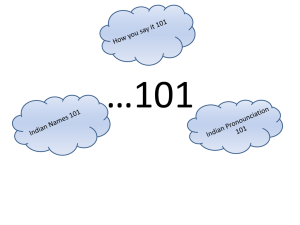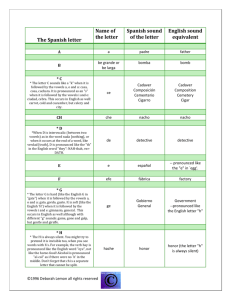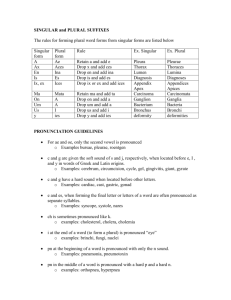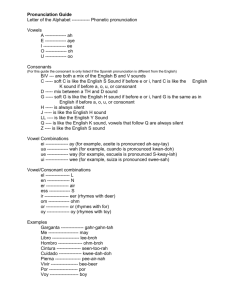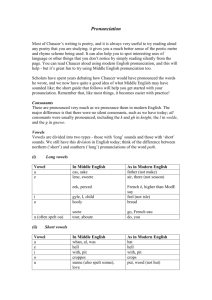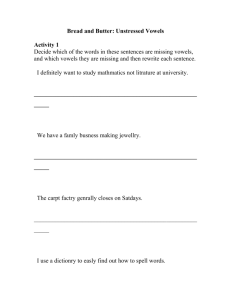Assignment
advertisement
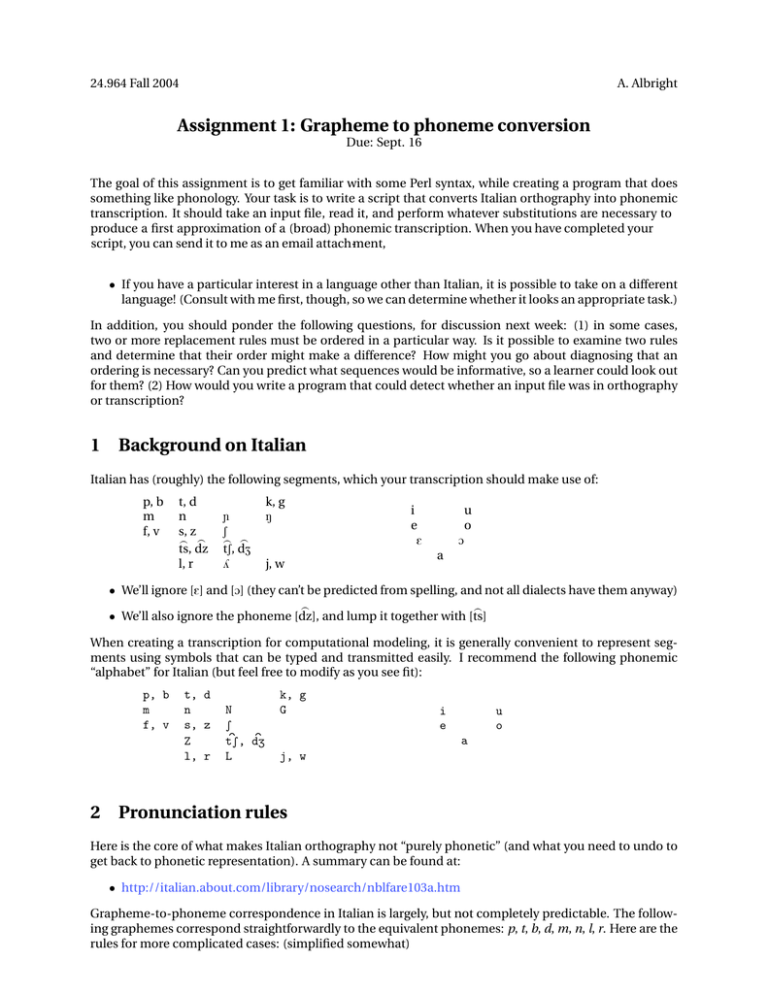
24.964 Fall 2004 A. Albright Assignment 1: Grapheme to phoneme conversion Due: Sept. 16 The goal of this assignment is to get familiar with some Perl syntax, while creating a program that does something like phonology. Your task is to write a script that converts Italian orthography into phonemic transcription. It should take an input file, read it, and perform whatever substitutions are necessary to produce a first approximation of a (broad) phonemic transcription. When you have completed your script, you can send it to me as an email attach­ment, • If you have a particular interest in a language other than Italian, it is possible to take on a different language! (Consult with me first, though, so we can determine whether it looks an appropriate task.) In addition, you should ponder the following questions, for discussion next week: (1) in some cases, two or more replacement rules must be ordered in a particular way. Is it possible to examine two rules and determine that their order might make a difference? How might you go about diagnosing that an ordering is necessary? Can you predict what sequences would be informative, so a learner could look out for them? (2) How would you write a program that could detect whether an input file was in orthography or transcription? 1 Background on Italian Italian has (roughly) the following segments, which your transcription should make use of: p, b m f, v t, d n s, z > > ts, dz l, r ñ S > > tS, dZ L k, g N j, w i e E u o O a • We’ll ignore [E] and [O] (they can’t be predicted from spelling, and not all dialects have them anyway) > > • We’ll also ignore the phoneme [dz], and lump it together with [ts] When creating a transcription for computational modeling, it is generally convenient to represent seg­ ments using symbols that can be typed and transmitted easily. I recommend the following phonemic “alphabet” for Italian (but feel free to modify as you see fit): p, b m f, v 2 t, d n s, z Z l, r N S > > tS, dZ L k, g G i e u o a j, w Pronunciation rules Here is the core of what makes Italian orthography not “purely phonetic” (and what you need to undo to get back to phonetic representation). A summary can be found at: • http://italian.about.com/library/nosearch/nblfare103a.htm Grapheme­to­phoneme correspondence in Italian is largely, but not completely predictable. The follow­ ing graphemes correspond straightforwardly to the equivalent phonemes: p, t, b, d, m, n, l, r. Here are the rules for more complicated cases: (simplified somewhat) 24.964 Fall 2004 Assignment 1 • gli is pronounced [L]1 before another vowel (meglio = [meLo], famiglia = [famiLa]). It is pronounced [Li] at the end of a word, or before a consonant (figli = [fiLi]) • sci is pronounced as [S] before a vowel (sciolta = [Solta]), [Si] before a consonant or word­finally (pesci = [peSi], sciroppo = [Siroppo]) • sc is pronounced as [S] before [e], [i] (pesce = [peSe]) (See previous for rules about [i] in particular). It is pronounced as [sk] otherwise (pesca = [peska]) > > > > • ci and gi are pronounced as [tS] and [dZ] before another vowel (cielo = [tSelo], giusto = [dZusto]), and > > > > as [tSi] and [dZi], respectively, before a consonant or word­finally (cibo = [tSibo], undici = [unditSi]) > > • c is pronounced [k] before back vowels ([a, o, u]), [tS] before front vowels ([e, i]) (e.g., cera = [tSera]) • ch is pronounced as [k] before front vowels (it doesn’t occur before back vowels). Hence, sch is [sk] (dischi = [diski]) > > • g is pronounced [g] before back vowels, [dZ] before front vowels (e.g., gelo = [dZelo]) • gh is pronounced as [g] before front vowels (it doesn’t occur before back vowels) • gn is pronounced as [ñ] • n is pronounced as [N] before velar stops (funghi = [fuNgi], banca = [baNka]) > • ng is pronounced as [Ng] before back vowels (mango = [maNgo]), [ndZ] before front vowels (mangio > = [mandZo]) (This is not a separate rule, but illustrates the interaction of two rules above) • qu is pronounced as [kw] • h is silent word­initially (pronounced as nothing) • s is pronounced as [s] or [z]; for present purposes we’ll just assume the following rough distribution: – [z] intervocalically, and before voiced stops (rosa = [roza], frase = [fraze], sbarco = [zbarko], sgarbato = [zgarbato]) – [s] elsewhere (sale = [sale], pasta = [pasta], pensa = [pensa]) • z is pronounced somewhat unpredictable as [ts] or [dz]; we’ll cheat and call them all Z • Italian also has geminates, which you can represent as a sequences ([pp], [ZZ], etc.) ☞ Watch out for sequences like cci, which should be CC, not kC (braccio = braCCo) • Vowels are sometimes written with accents to indicate stress (à, è, etc.) There are also diphthongs (e.g., ao = [aU]). In addition, [u], and [i] are sometimes realized as glides ([w, j]). Since the goal here is to learn how to implement a set of replacement rules, I recommend focusing on the consonants and ignoring these vowel issues. A proposed alphabet of symbols to use for phonetic transcription can be found in ItalianPhones.txt on the course website. Here are some examples of transcriptions using this system: cara gusto mangio sogno lascia sciroppo funghi chiuso kara gusto manJo soNo laSa Siroppo fuGgi kiuzo 1 In point of fact, both [L] cera giusto anche questo pesce schivo ghigno festa Cera Justo aGke kwesto peSe skivo giNo festa cielo mango braccio hanno pesci pazzo sbaglio esercizio Celo maGgo braCCo anno peSi paZZo zbaLo ezerCiZio and [S] are always long intervocalically: [meL:o], [peS:i]. We will ignore this detail here. 2
